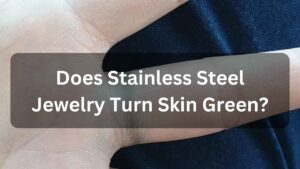As you know oxygen is extremely necessary for life activities because it is the oxygen that helps in the release of energy from food molecules for our body. In this article, we will discuss “how is oxygen transported in the blood and released in the tissues” and all about this topic.
Let me ask you what is oxygen?
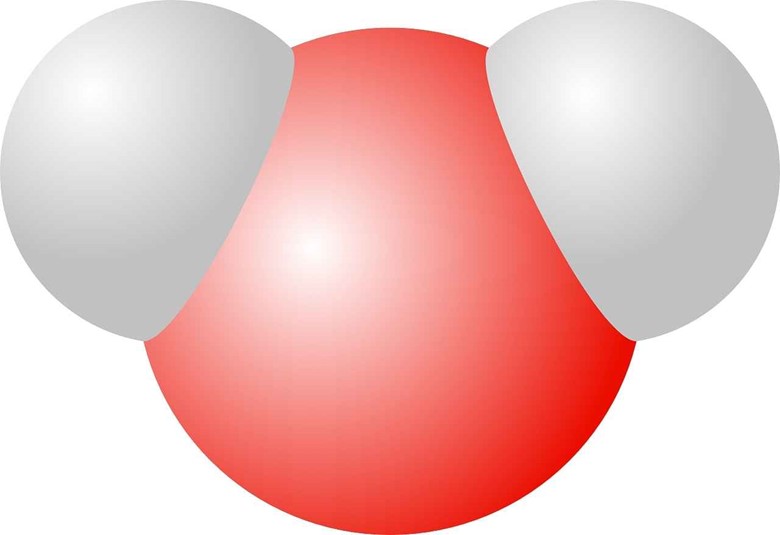
Oxygen is a non-metal element that is gas at room temperature.
How it is transported in the blood?
Before going to this you should know how it comes to the blood?
Okay, how does it come?
The oxygen comes to the blood through the respiratory system and the respiratory system is divided into two parts.
- Upper respiratory system/tract
The upper respiratory tract has the following structures for the transport of gases.
a) Nostrils
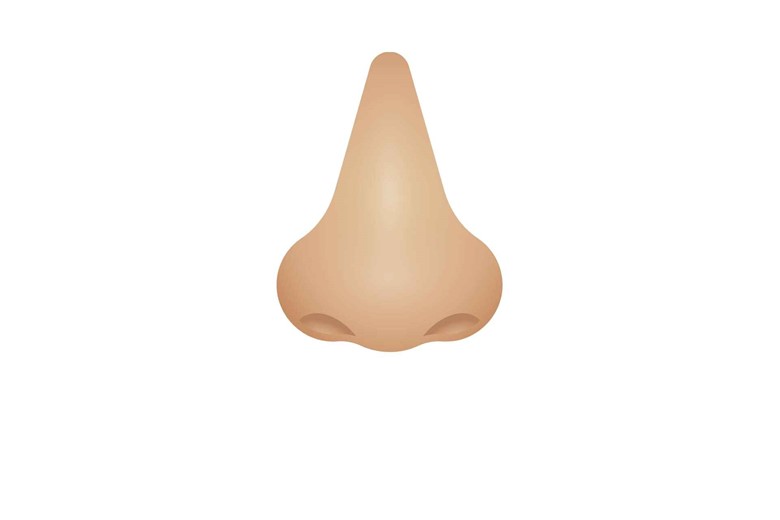
Nostrils are the two openings of the nasal cavities on the nose that lead to nasal cavities. The air
enters through the nostrils.
b) Nasal cavities

Nasal cavities start from the nostrils and contain hairs and mucus membranes.
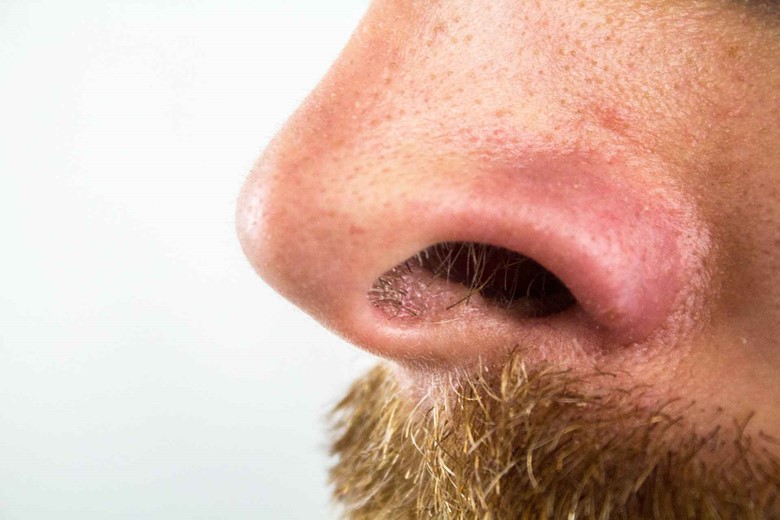
The hairs in the nostrils filter the incoming air and hence serve as a defense mechanism against harmful pathogens and solid dust particles present in the air.
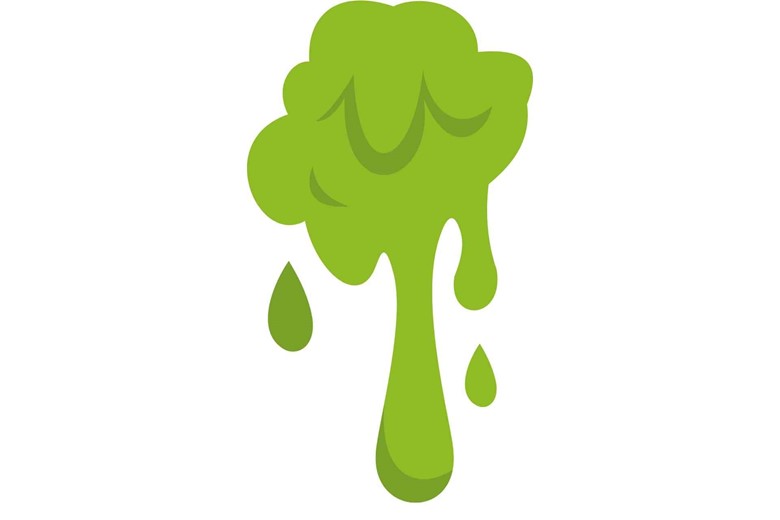
The mucus membrane secretes a sticky fluid called mucus which traps the dust particles and microorganisms from the incoming air. Also, mucus moistens the air so that their entry and exchange are easy.
The mucus membrane also has cilia which move the trapped substances to the pharynx for removal.
Beneath the mucus membrane, there is a supply of blood capillaries that help to warm up the air to about 30 Co depending upon the external environment temperature.
c) Pharynx
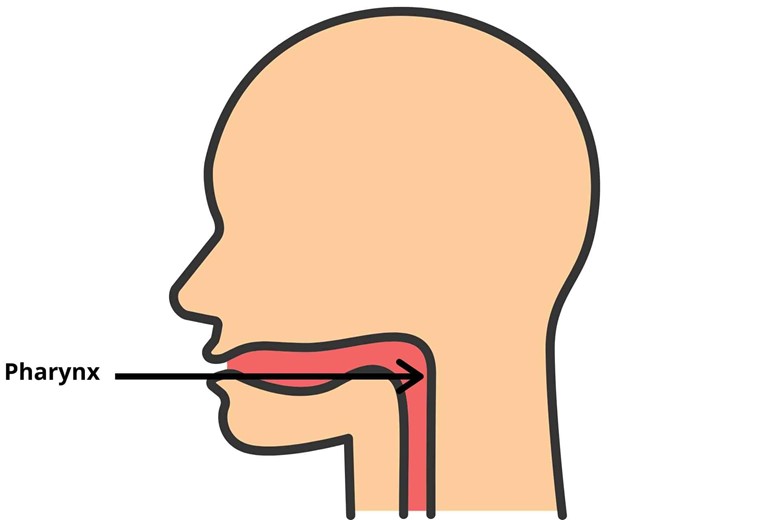
The pharynx is a cone-shaped pathway that leads from the nasal as well as oral cavities to the larynx (soundbox) and esophagus. The pharynx is part of both the respiratory and digestive systems.
Do you know the importance of oral and nasal regions?
The oral and nasal regions are interconnected with each other and this interconnection is extremely important because it allows us to breathe through either nose or mouth and when medically necessary it allows the food to be passed through nasal tubes to the esophagus.
But which part is best to breathe?
The nose should be used for breathing because the filtration system and mechanism are not present in the oral cavity. The oral cavity can be used when there is no option.
d) Larynx
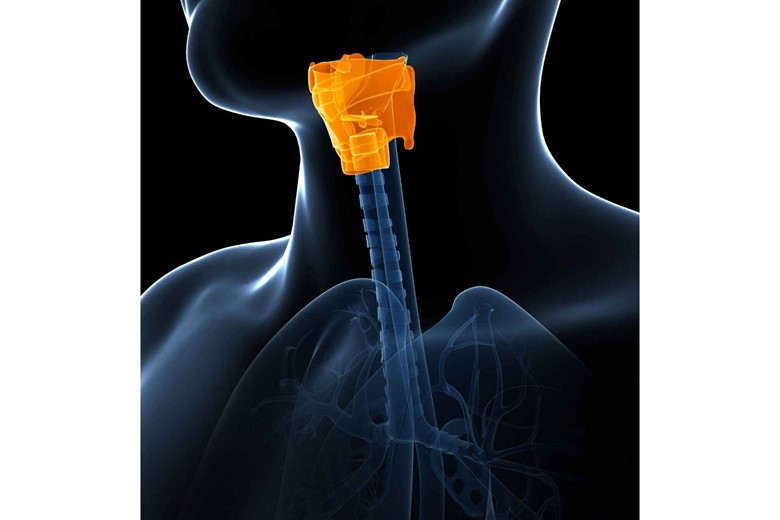
The larynx is made of cartilaginous plates that prevent it from collapsing and perform a dual function, as an air canal to the lungs and organ of voice. The larynx has two vocal cords that are composed of mucus membranes stretched horizontally across the larynx. The opening and closing of these vocal cords produce sound.
2. Lower respiratory system/tract
The lower respiratory tract consists of the following structures.
e) Trachea
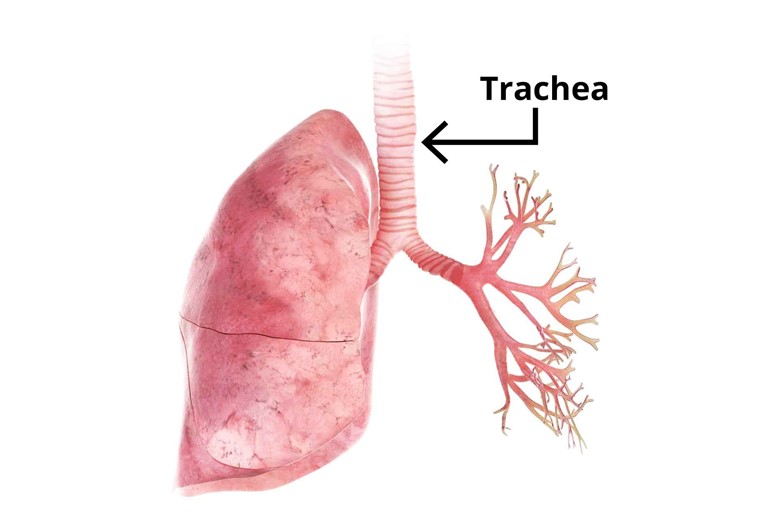
Trachea is a tube of about 10-12 cm long and 2 cm wide which conveys the inhaled air from the larynx to the bronchi. The trachea’s wall is supported and stiffened by 16 to 20 horseshoe-shaped or C-shaped incomplete rings which are open from backward. It has also cilia which work to filter the air from foreign particles. It again moistens and warms the air before it goes to the lungs.
f) Bronchi
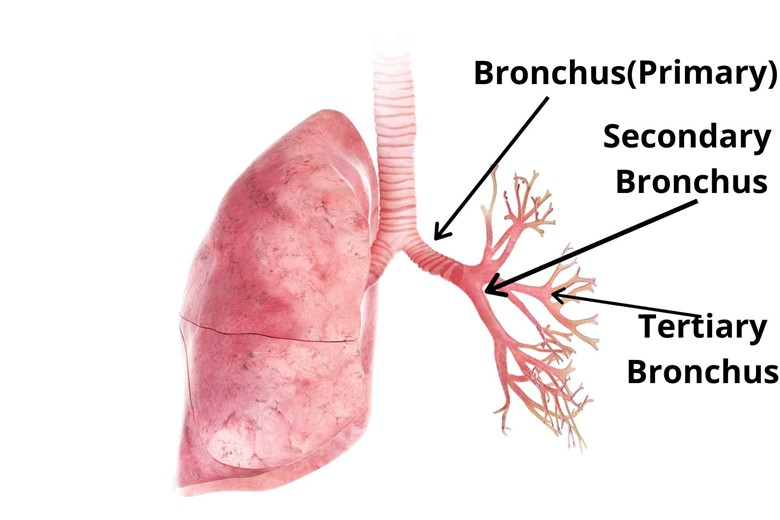
Trachea divides into two tubes called bronchi one each for the left and right lung. The right bronchus (plural bronchi) has a larger diameter than the right bronchus and is also shorter than the left bronchus.
The structure of bronchi is similar to the trachea but the only difference is that the bronchi have smaller cartilaginous plates to support their walls and structure.
g) Bronchioles
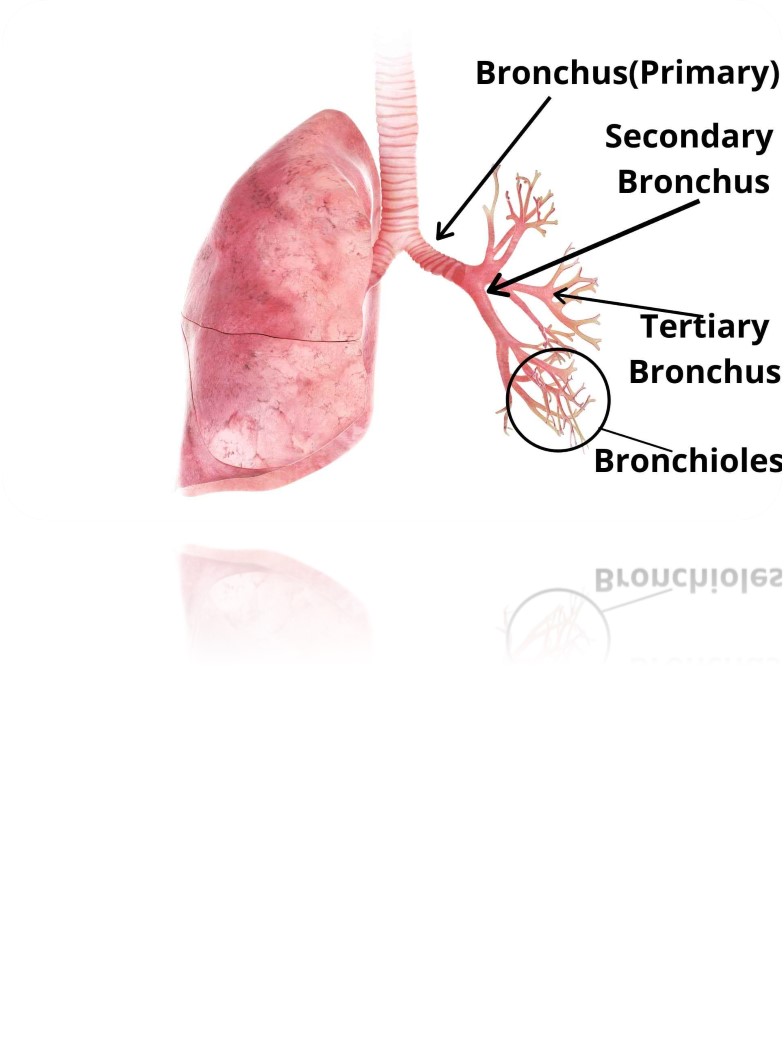
The bronchioles start at the end of the bronchi and terminate in the alveoli. The diameter of the bronchioles is approximately 1mm or less and their walls consist of ciliated cuboidal epithelium and smooth muscle.
Bronchioles are the first air passageway structure that doesn’t contain any cartilage.
It is responsible for controlling the air distribution in the lungs because bronchioles can either increase or decrease the diameter by changing their diameter.
h) Alveoli
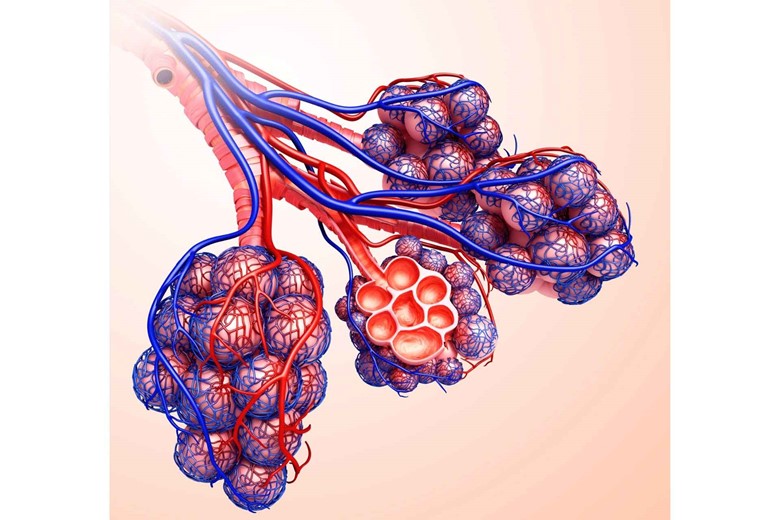
The bronchioles divide and re-divides deeply in the lungs and open into a small sac-like structure called alveoli where the actual exchange of the gases takes place. The wall of each alveolus is only 0.1 micrometer. Collagen and elastic fibers are also present in the alveoli which allow them to expand and recoil easily during breathing.
Also outside of alveoli, there is a dense supply of capillaries which is necessary for good gaseous exchange.
The thin walls of the alveolus made it possible and easier to diffuse oxygen to the blood capillaries and carbon dioxide to the alveoli for expulsion.
Now you get the respiratory system?
Pretty good.
Now oxygen has reached the blood here it will be the oxygen transported in the blood to the whole body.
How?
Let me explain it to you.
As mentioned the alveoli have a dense supply of capillaries so the oxygen through diffusion is exchanged with the blood from the alveoli.
And how it is transported in the blood, I mean in which form?
Okay for this you have to know the composition of blood a little. Let me ask you.
What is the main component of blood?
Well, the blood has two main parts i.e.
a) blood cells
b) Plasma
Do you know how to point out blood cells and plasma parts of blood?
No. let me ask a question again.
Did you see the blood in the test tube kept for an hour or for some time?
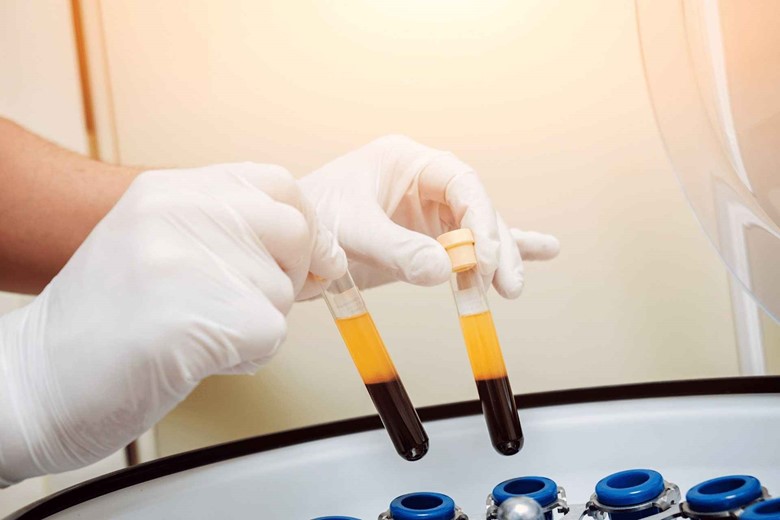
Yes. There are two parts, the lower part of the test tube was red while the upper part was yellowish.
Did you know what is the red part?
No.
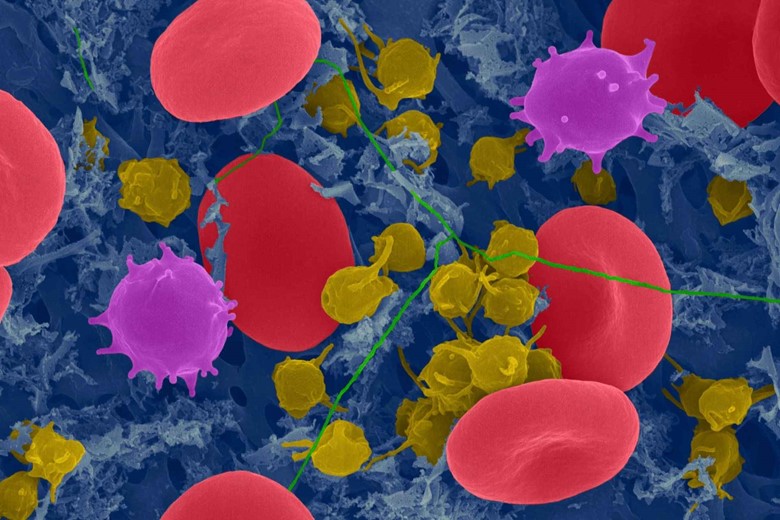
The red color is due to Red Blood Cells (erythrocytes) which contain a protein called hemoglobin making the color of blood red. Among Red Blood Cells (erythrocytes) white blood cells (leukocytes), and platelets (thrombocytes) are also present in this red part.
The upper yellow color part is plasma which is obtained by removing the red blood cells, white blood cells, and platelets from the blood. It contains water, salts, enzymes, antibodies, and other proteins.
Now you know where hemoglobin is present?
Yes, in Red Blood Cells.
But do you know what is hemoglobin and what is their function?

Hemoglobin is an iron-containing metalloprotein present in the red blood cells (RBCs) which carry oxygen to different parts of the body (cells and tissues). Hemoglobin is denoted by Hb or Hbg.
It is present in almost all vertebrates except a fish family called Channichthyidae (also called crocodile icefish or white-blooded fish).
So it means all OXYGEN is carried by hemoglobin?
Approximately, 97% of the oxygen is carried by red blood cells.
But how is oxygen transported in the blood (hemoglobin)?
In the form of oxyhemoglobin.
What is oxyhemoglobin?
When oxygen binds with the hemoglobin then it is called oxyhemoglobin. So most oxygen is transported in the blood bound to hemoglobin.
How many molecules of oxygen (O2) are carried by one hemoglobin?
One hemoglobin can bind with four molecules of oxygen and carry it to the cells as oxyhemoglobin. Carbonic anhydrase is an enzyme that delivers oxygen from the alveoli of the lungs to the blood.
Then how it is delivered to tissues and cells?
Let me as you a question to clarify this because you know this process but just to remind you.
Do you know diffusion?
Um, A little.
Let me explain it to you.
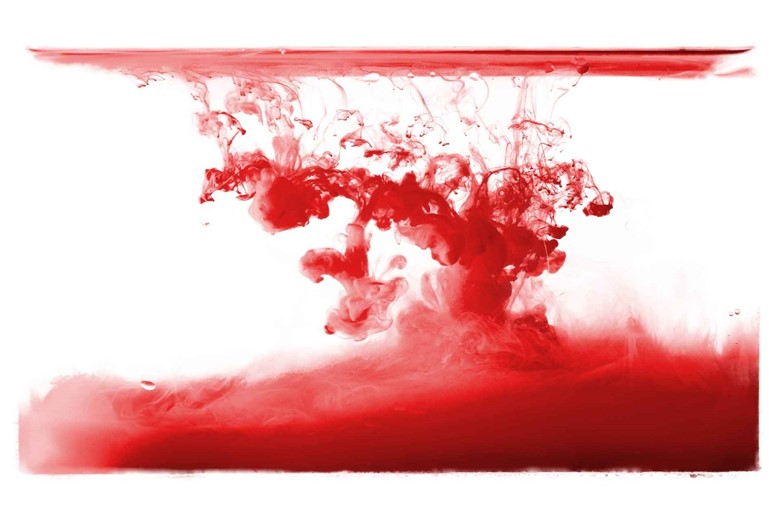
Diffusion is the process in which the molecules move from a higher concentration to a lower concentration.
Okay, that’s easy.
So what is the connection of diffusion here?

Because the cells and tissues need oxygen so they are in a lower concentration. Also, the blood reaching the lungs are oxygen deficient means that they are in low concentration.
The lungs which regularly get oxygen are rich in oxygen concentration so they are in higher concentration.
So now you tell me what will happen?
I got it.
The oxygen will move from a higher concentration i.e. alveoli to the blood which is at a low concentration.
Yes, that’s right.
Now the blood will move from the lungs to the different parts of the body to deliver oxygen.
Now you will be telling me what will happen in tissues?
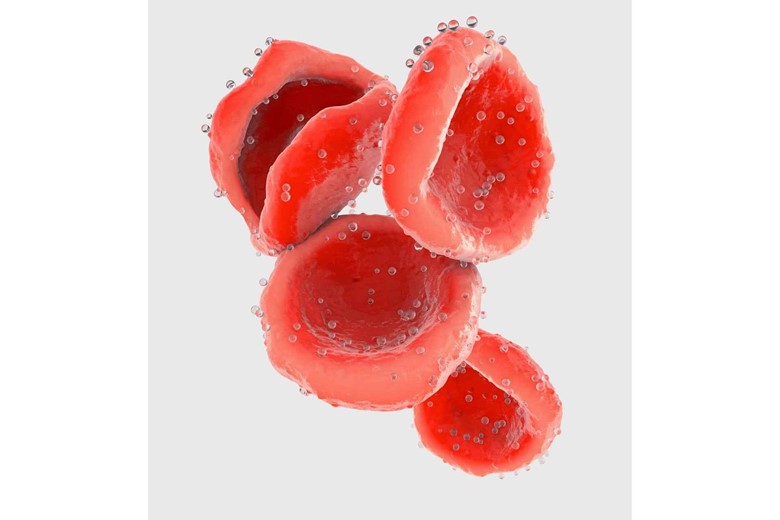
The oxygen-rich blood will move to different tissues and cells.
Okay.
What will happen next?
Diffusion.
How?
The oxygen-rich blood is high concentration while the cells and tissues are oxygen deficient which is low concentration and according to diffusion, the molecules move from higher concentration to low concentration so the oxygen will diffuse from blood to cells and tissues.
That’s correct and excellent for you. You get it.
But I have a question, where the blood will move after the delivery of oxygen?
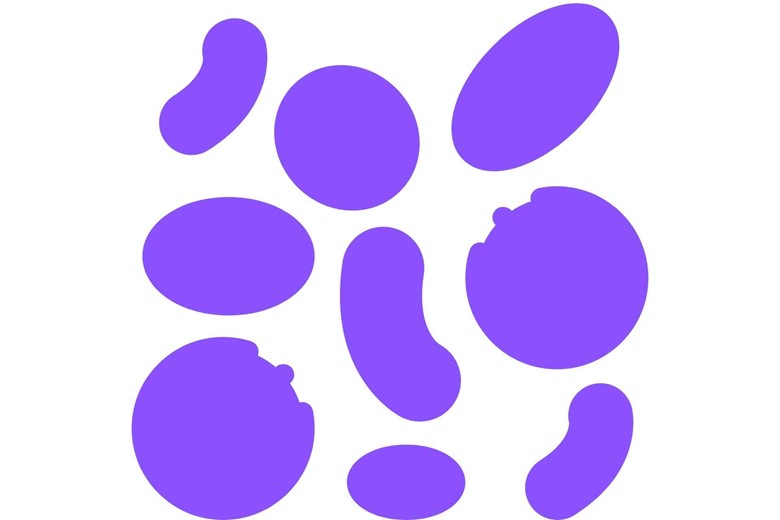
The RBCs again become deoxygenated (oxygen lack) so they will move again to the lungs and again become oxygenated through diffusion to repeat the cycle.
Why does this process repeat again and again?

Because in our body metabolic processes are going continuously which needs energy even the breathing we are doing also needs energy. Moreover, we need energy for our daily activities so this process of blood oxygenation and deoxygenation continues to fulfill these needs.
Is there any factor that affects the rate of oxygen binding to the hemoglobin?
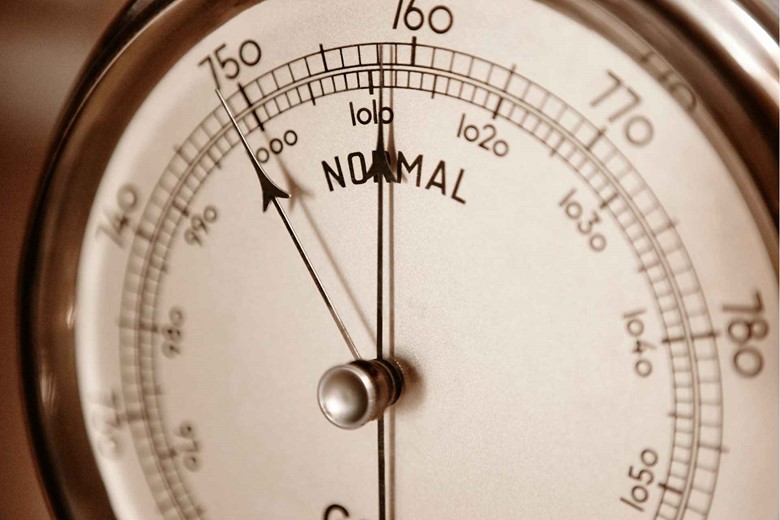
Yes, the partial pressure. As the partial pressure of the oxygen in the blood increases, more oxygen binds to the hemoglobin in the blood and vice versa.
What is meant by partial pressure?
The pressure exerted by one of the gases in a mixture of gases is called partial pressure.
Let me explain to you more, the air we inhale is a mixture of gases like Nitrogen, Oxygen, and a small number of other gases like Carbon dioxide, Neon, Argon, Helium, and Hydrogen. The pressure exerted by the molecules of Oxygen is called the partial pressure of Oxygen.
But why the other gases don’t diffuse and bind?
Because they don’t have a receptor for binding or attaching.
What is a receptor?
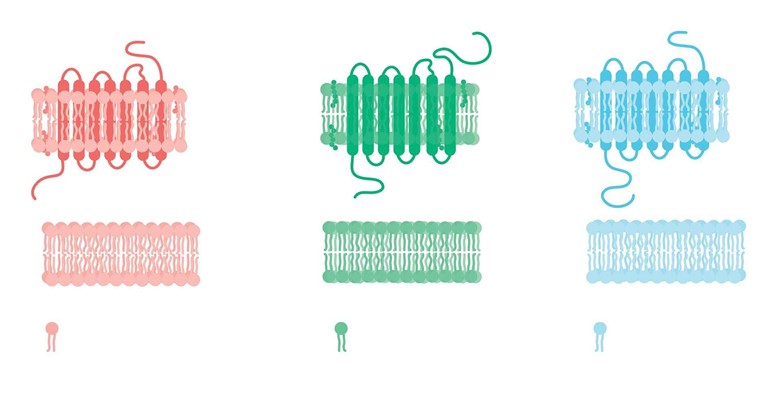
A receptor is a protein molecule or structure that is present on the surface of the cell for a specific target ligand (a molecule that binds to other molecules).
So why do we breathe slowly at high altitudes then?

At high altitudes, the partial pressure of all gases, as well as the partial pressure of Oxygen,
decreases so the diffusion of Oxygen is also slow which makes it harder to breathe in high altitudes though the concentration of gases is constant in different altitudes only the partial pressure decreases.
Now coming to the second part of blood i.e. plasma.
Plasma
As you know Plasma is the yellowish part of the blood (in the test tube) is plasma which contains enzymes, salts, water, antibodies, and other proteins.
But does plasma transport the “oxygen”?
Yes, 3% of the Oxygen is carried as dissolved in the plasma playing a minor role in transportation.
CONCLUSION/SUMMARY
So we concluded the answer to “How is oxygen transported in the blood and released in the tissues” is that there are two ways through which oxygen is transported in the blood.
I) Blood cells
II) Plasma
Blood cells contain Red Blood Cells which have a protein called Hemoglobin for carrying about 97% of oxygen from the lungs to the cells and tissues where it is delivered and for energy released by the breakdown of food molecules. The RBC takes Oxygen from the lungs through the process of diffusion because the concentration of oxygen in the lungs is high as compared to the concentration in the blood, and then delivers it to the cells and tissues through the process of diffusion as well.
On the other hand, Plasma just transports only 3% of Oxygen to the tissue. Plasma is the yellowish part of the blood which contains salts, enzymes, antibodies, etc, and has the main role in other activities of the body.
I hope this article would help you if you have a question or suggestions please let me know through the comments section below.




